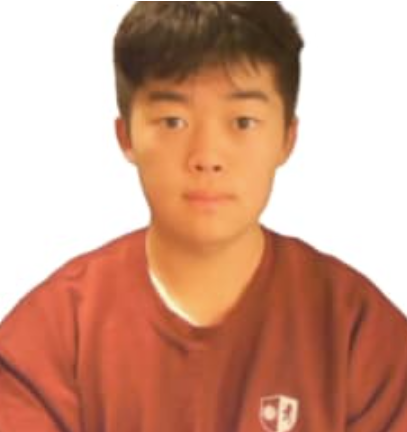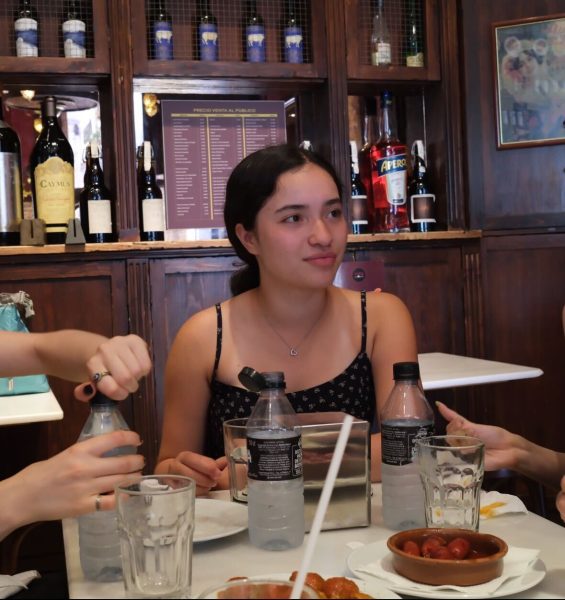Fifty-four years ago, on Nov. 18, 1970, Bill Gates first tried his hand at a computer, and thus began the story of programming at Lakeside.
This story begins with a prequel of the enormous potential and skill that Lakeside students held in the 1950s and ’60s in mathematics and engineering. In 1960, John Drumheller was one of 448 students in the nation who won the annual Westinghouse Science Talent Search (now Regeneron STS) for his construction of a DRING (a digital relay integrator, numerator and calculator) and for his high score on an exam covering “all facets of scientific study.”
Computers themselves at Lakeside can be traced back to 1968, when its Mothers’ Club purchased a terminal — a system that allowed students to interact with a remote computer through a typewriter-like device. The only thing it did was transmit and receive information, so in order to program anything, Lakeside had to also purchase valuable time on a distant computer owned by General Electric that could execute code. Terminals had only just been made accessible to the general public in 1965, and were mainly used by experienced office workers or researchers, who would’ve been repulsed by the thought of grimy teenage hands messing up their sleek, new accessories.
Lakeside’s teachers thought otherwise. Bill Dougall, a STEM teacher and later faculty advisor from 1957 to 2009, was one of the many members of Lakeside’s staff who pushed for student access to a terminal. Even though computing and programming weren’t part of the school’s curriculum, math and science teachers allowed students to skip class to work on programming the terminal.
This early access to computing power was revolutionary and allowed two pairs of best friends to bond with each other over a shared love of programming. These friends were Bill Gates with Kent Evans, and Paul Allen with Ric Weiland.
With this cutting-edge technology, Evans and Gates were tasked with automating the class schedule system, and their solution worked, with a caveat…
Bill mysteriously ended up with his crushes in every class. What a coincidence.
That wasn’t the only stunt that the four pulled off, though. After the money pool from the Mothers’ Club ran out, Lakeside decided to make a deal later that school year with the Computer Center Corporation (C-Cubed), a company that allowed for shared usage of a computer called the PDP10, designed for collaborative work and widely used in universities and research labs during the 20th century.
In 1968, the four friends formed the Lakeside Programmer’s Group, and together, they exploited the “horrible” security on C-Cubed’s computers. Group members recalled causing system crashes and exploiting bugs in the operating system to gain free time on the computer’s mainframe. Eventually, the Programming Group was caught by the corporation’s security personnel and banned from the computers for several weeks.
C-Cubed, however, began to struggle with business due to the very same errors that the Programmer’s Group found, and so the Programmer’s Group was hired as some of Lakeside’s first “ethical hackers.” They tested the company’s computers for vulnerabilities and exploits. Their compensation? Unlimited computer time and free mentorship from the employees, from whom Bill Gates learned several different coding languages and techniques that later would set him up for success.
In 1970, C-Cubed went bankrupt. The Programmer’s Group, in need of another source of learning, then turned to Information Sciences Inc., who hired them to write a payroll program. Once again, they received unlimited computer time, with the added benefit of royalties for their work. In 1972, Gates and Allen, both juniors, started their own project: Traf-O-Data. Along with a newly-encountered Paul Gilbert, they created a small computer program to measure traffic for the Washington State Department of Transportation, and earned $20,000 from this venture, along with gaining valuable experience and knowledge. They also took on additional projects, namely debugging code for a defense contractor. These two projects formed the stepping stones to the creation of a very nondescript, low-profile company that pulled in very little money, called Macrohard.
Oops—Microsoft.
In the decades after Gates and Allen’s time here, Lakeside has continued to expand and refine its computer science program. By the 1990s and early 2000s, coding and computer science had become core elements of the curriculum. While many high schools in the 2000s only offered basic computer literacy courses, Lakeside provided a much more comprehensive selection that included web development, graphics, programming, and hands-on hardware experience. The courses offered during the 2001-02 school year were notably advanced for their time, promoting individualized exploration and practical technology skills that prepared students for college and future careers.
In recent years, Lakeside has expanded its computer science curriculum both within the classroom and through extracurricular activities.
For the past five years, clubs like the CS and Hackathon Clubs have spearheaded student involvement in coding competitions and technology-driven events.
One notable development is Andromeda — an AI system developed by Lakeside students at the Tech Grotto this past summer, leveraging a large language model (LLM) from Meta called Llama. LLMs are AI models that can generate and interpret text, as well as understand language patterns. Similar to the way students were encouraged to experiment with programming 50 years ago, Andromeda provides today’s students with access to cutting-edge AI models, including ChatGPT 4, allowing them to explore, test, and debug these systems in a hands-on environment reminiscent of the Programmer’s Group days.
Looking ahead, the recently established Lakeside Coding and Informatics Club (LCIC) is set to become a central hub for students passionate about coding and computational problem-solving. The club encourages participation in prestigious national and international coding challenges, including the USA Computing Olympiad (USACO) and CodeForces (CF).
Lakeside’s curriculum continues to evolve with the tech industry, integrating modern technologies like artificial intelligence and machine learning. The “Green-Yellow-Red” AI policy has been introduced, which has vastly undercut confusion on boundaries and limitations of the use of generative artificial intelligence during certain assignments or tests. The school frequently updates its course offerings to address emerging fields such as cybersecurity and data science, and remains committed to nurturing the next generation of innovators — not just with amazing faculty and opportunity, but with the same playful, exploratory spirit that began in the 50s and 60s, allowing students to experiment with technology in ways that keep Lakeside’s legacy of excellence and curiosity alive for years to come.



